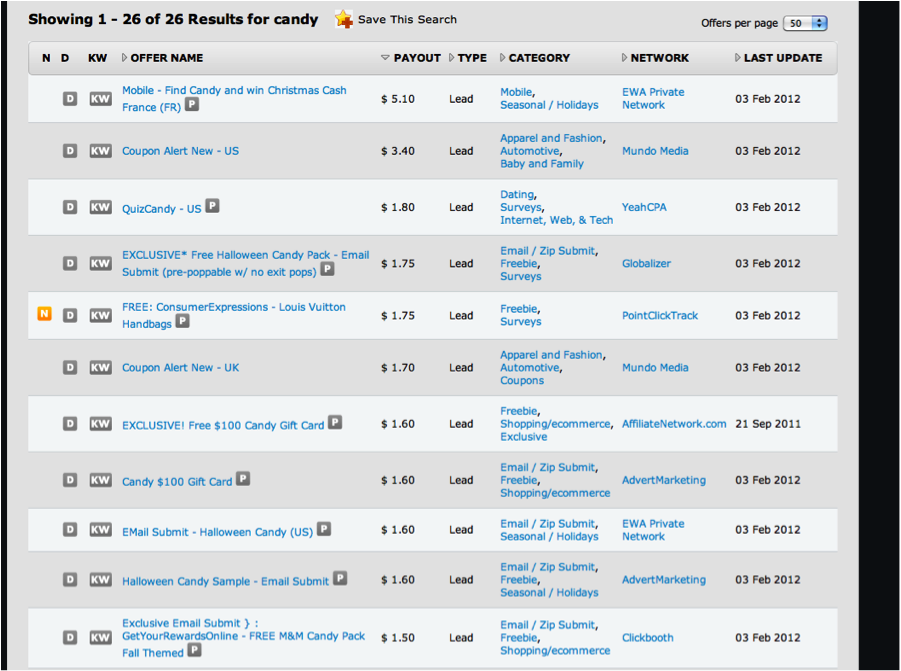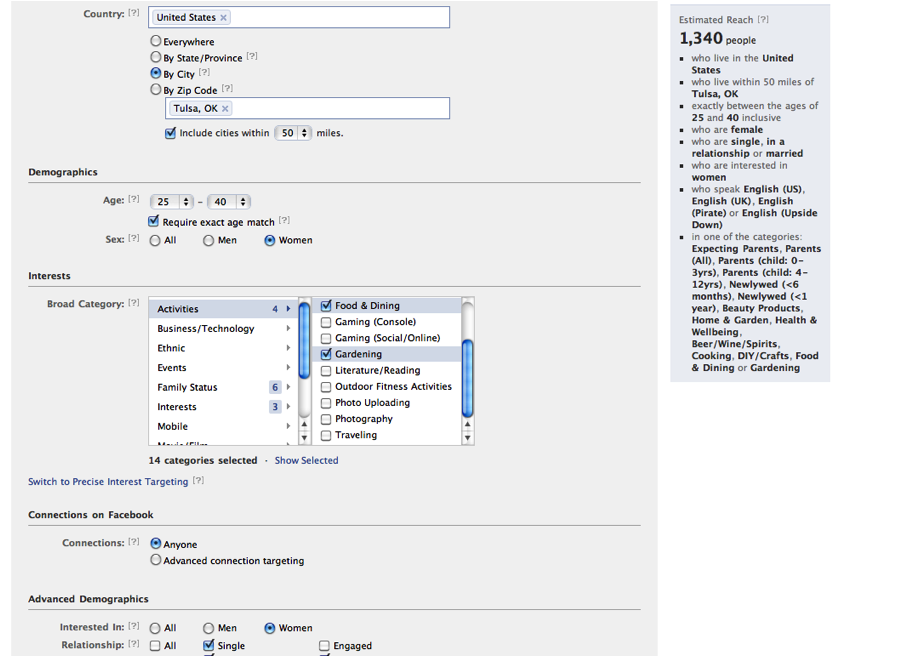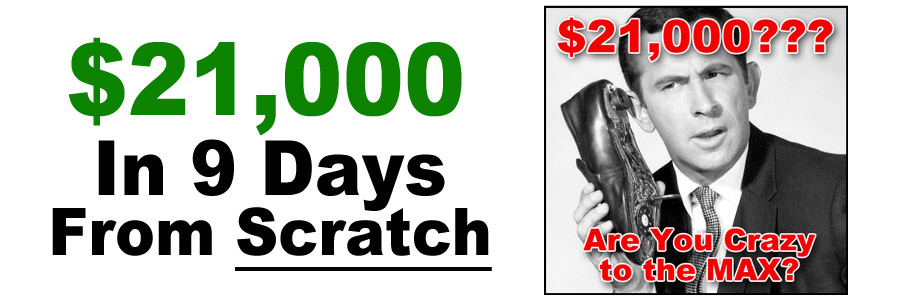As affiliate marketers, we have to make significant investments on promoting our campaigns on advertising platforms such as Google, Bing, Yahoo, Facebook, and LinkedIn. Each platform has its own way of determining how ads are ranked as well as determining the user profile so that the ads delivered are as contextually sensitive given the users current Internet surfing activities.
Have you noticed that key Internet search properties are now matching users with the more specific advertisements? Most of these firms use psychographic mapping to produce advertising results in line with content delivery.
Psychographic profiles are used in market segmentation as well in advertising to better manage user activity, interest, and opinion (AIOs), user attitudes, and user values. Of all three areas, the one affiliates often capture most often is the AIO’s because those are keyword driven. But how does one capture the attitudes and user values. This is where strategic placement and profiling your campaign is critical.
Let’s assume you are looking to promote an affiliate campaign focusing on Candy. Who and when would you promote a campaign on candy? Two possibilities are Valentines Day and Halloween. An alternate answer is not focusing on seasonality but on what activity is related to candy such as Couponing. Using Offervault, you would complete a search on the word “Candy.” The result set that would come up is:
As one can see from above, the results set either points to seasonal opt-in offers (submits) or offers that require a user to regularly go to a Website for downloading of coupons and provide a customer profile. Both of these items are forms of permission-based marketing (PMB). Clearly, the more information that is provided in a submit or a profile, the greater the contextual marketing is for the end user after agreeing to the opt-in. But determining how to get the user to click on the advertisement let alone give you permission to send further mailings out is the real challenge.
Let’s take a look at the campaigns that are associated with Couponing campaigns titled “Coupon Alert.” As an affiliate, we don’t want to spend more money scaling campaigns than we have to. So here are some things to consider:
- Do your research on who actually are the heaviest users of coupons.
- Focus your target market area; will be exclusively on campaigns in the US and the UK.
- Next determine what promotion methods the offer allows. This is critical to ensure you aren’t wasting money promoting a campaign that will yield bogus leads.
- Form factors are critical for retaining and having customers return back to continue their transactions. Will a user stay on a site once they submit the information or will they exit? For example, smartphones are quick-response platforms so to assume a user will stay on a page for minutes is foolish. This may be the case for tablets, but not for smart phones. So for this kind of campaign – smartphone targeting is out.
- Third, understand your competition and review other sites that provide couponing relevant content. Who and what is the target?
Finally, focusing in on an ultra-tight theme requires developing the psychographic profile. Determining where you will promote the advertising is secondary. Questions you would ask yourself include:- Would you promote an affiliate campaign for couponing on LinkedIn – probably not because it’s a professional services platform and most users that go to LinkedIn are not looking to save money, they are looking to make money.
- Would you promote an affiliate campaign for couponing on Facebook – absolutely! Why? You can do ultra-tight contextual targeting. One can profile the users based on geography, age, gender, income, interest, and even products. But, is this type of campaign useful for mobile? No, because Facebook doesn’t offer mobile psychographic advertising functionality just yet for feature and smartphones. So if the goal is to develop a campaign for mobile – Facebook is not the place to focus ones energies.
- Would you promote an affiliate campaign for couponing on Bing, Google, or Yahoo and scale it for Internet and Mobile. You sure will and can. Question is, how?
Using the US consumer as an example, here are tactics to use in building an affiliate campaign for traditional Internet and mobile Internet. Concepts to consider when writing your ad copy:
- It is common that women use coupons far more than men to shop.
- Women who have children use coupons more than women who are not parents or married. Women who are single or do not have children often use coupons for beauty products.
- The average woman who uses a coupon is between the ages of 25-40.
- Women in large cities (New York, Boston, Chicago, Los Angeles, Atlanta, Miami) are not as likely to go to a grocery store and use a coupon. Think about how people use their times. City living is equated to hectic lifestyle. Couponing is often a suburban mom activity. Think smaller metropolitan cities and suburbia.
- Women whose average gross household income is less than $75,000 often use coupons.
- The most common products that women use couponing for are beauty/bathroom products and baby products. Why? Because these two product classes have the most impact on a families budget.
If you can answer those questions and get to that level of data granularity, you have yourself a solid understanding of how to develop a psychographic profile and strong affiliate advertising copy.
Let’s now translate this visually assuming the user is based in Tulsa, Oklahoma and has two children aged 6 months and 2 years old where the family income is $50,000 per year:
| Concepts | Internet Campaign | Mobile Campaign |
|
KNOWN FACTS
PSYCHOGRAPHICS
|
KNOWN FACTS
PSYCHOGRAPHICS
|
If you look above, there is no way for the typical affiliate to know most of those details. A typical affiliate would promote purely on keywords or use location in the context of their advertisements. Search engines; however, do know more about the users than you think. For example, if you have a Gmail account and are searching Google, your email is actually analyzed as well as your search history (location of search, how long you searched, what you searched for, your conversations among friends, what links you clicked from Google search) to paint a picture of the user associated with their email account. Similarly, Facebook allows for targeting of campaigns based on the things you like, the words you put in your statuses, your life events, and the advertisements you click.
In our example above, we can easily pair down the search parameters to a very focused target. Even though there is an estimated 800 million users on Facebook, there is no reason to target all 800 million users. In fact, you can target a very small user base. Using the data above, the Facebook campaign has been scaled using the psychographic factors. The result: a target of 1340 potential Facebook users.
A combination of all the factors described plus other psychographic terms associated with the description above yields this very targeted campaign where quality clicks and user conversion are more likely than if you use broad concepts and cast a very wide net to target users for your affiliate campaigns.
Bottom line: psychographic research is critical to deploying effective affiliate campaigns. The more contextual your PPC copy is or the more granular one can get with their audience targeting, the greater the chance will be to get solid click-thrus and conversions.






